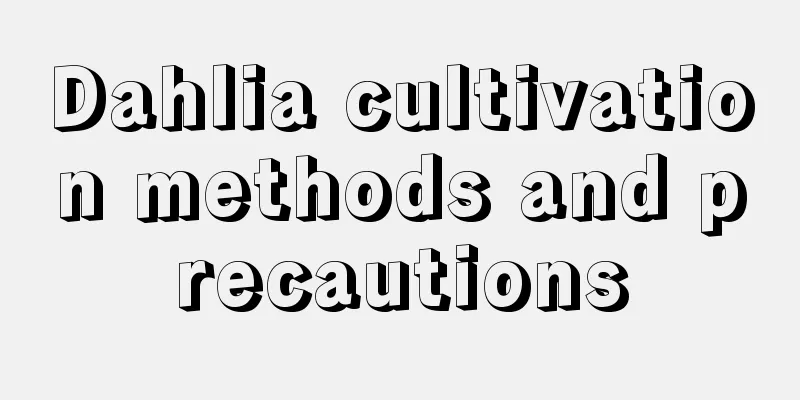Dahlia cultivation methods and precautions

1. SoilWhen growing dahlias, its environmental requirements must be fully met. It should have well-drained sandy loam and generally be equipped with nutrient soil that meets its needs. Usually, five parts of garden soil, two parts of leaf mold, two parts of sand and one part of decomposed organic fertilizer are mixed to meet its soil requirements. 2. LightDahlias require relatively sufficient light because they are long-day flowers. An overly dark environment will cause the dahlias to grow too tall and bloom poorly, affecting the normal growth of the plant. 3. WaterDahlias require the soil to remain slightly moist, neither too dry nor too wet. If it is summer, you must also pay attention to drainage after rain to prevent water accumulation from damaging the root system. 4. FertilizationDahlias require sufficient fertilizer. Generally speaking, when planting bulbs in early spring, it is necessary to apply sufficient amount of decomposed organic fertilizer into the planting pots or soil as base fertilizer. During the growing season, apply a thin layer of liquid fertilizer every 10 days or so. 5. TemperatureDahlia is a plant that is afraid of both cold and heat. Generally speaking, when the temperature at night is below 10℃, you must take measures to prevent cold, and when the temperature at noon reaches above 25℃, you must prepare to take measures to prevent heatstroke and cool down. The ideal growth temperature is between 15℃-25℃, so that it can grow better. 6. Notes1. During the maintenance process, pay attention to avoid sun exposure in summer and water accumulation after rain. Dahlias are susceptible to a large number of diseases and pests, so they must be observed at all times during maintenance and controlled in the early stages to avoid unnecessary damage. 2. Dahlias are relatively tall and have heavy flower heads, and may fall over due to weather or human factors during the maintenance process. Generally, it is necessary to use pillars to support it in the middle and late stages of its growth. At the same time, because its root system is relatively large, it is best to bury the support pillars in the soil when the bulbs are planted, so as to avoid damage to the dahlia's root system when setting up the support pillars later, and even cause the bulbs to die. |
>>: Is Blue Snowflake Extraordinary Bluer?
Recommend
How to plant taro in pots after it sprouts
Taro can be planted after it sprouts, and the pla...
When is the best time to harvest black sesame? What month is the black sesame harvest season?
Black sesame planting is divided into summer sesa...
Why doesn't Clivia bloom?
1. Improper watering Reason: If you water the Cli...
How to grow Kinokawa succulent
1. Soil This kind of succulent plant generally pr...
How to treat the leaf spot disease of the lucky tree (with pictures of the disease)
1. How to treat the leaf spot disease of lucky tr...
How to propagate roses by cuttings (detailed explanation of the cutting method)
1. Time for cuttings It is very easy to propagate...
What is the best fertilizer for grape vines?
Grapevine fertilization time Grape vines can be g...
The efficacy and function of Jinrong
The ornamental value of Ficus microcarpa Garden a...
How to care for the cabbage succulent so that it grows quickly into a short and thick pile and looks good
Cabbage-like succulents are also called wrinkled-...
Can a camellia tree be planted outside your home?
Can camellia trees be planted at the doorstep? Ca...
How to make the leaves of the fortune tree greener and greener (how to make the leaves green and lush)
How to make the leaves of the money tree greener?...
What soil is suitable for planting Photinia fraseri
Photinia soil Photinia prefers slightly acidic so...
How to prune honeysuckle
1. Pinching and topping The height of the potted ...
What is the most profitable crop in rural areas in 2022 (What crops will make money and get rich quickly in the next five years)
What to plant in rural areas to get rich quickly ...
Mushroom growth environment conditions and characteristics
Mushroom Growth Environmental Conditions and Requ...









